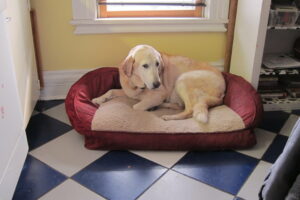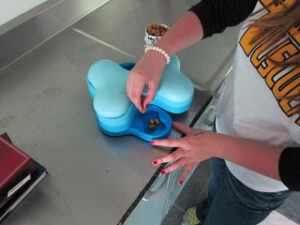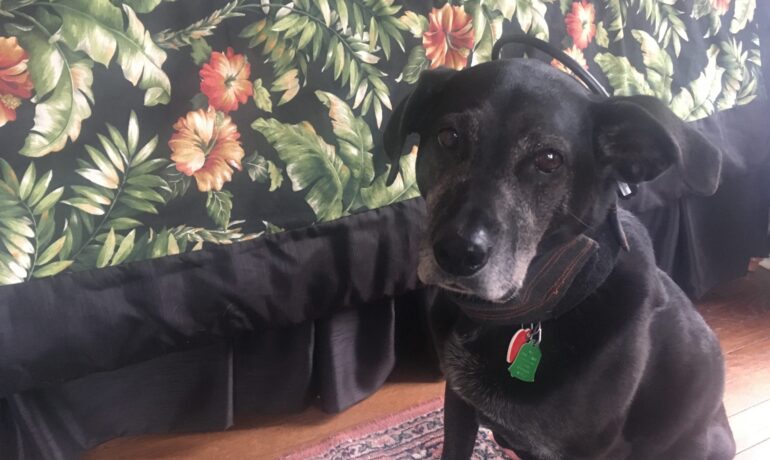5 Essential Steps to Stop Separation Anxiety
Separation anxiety can be one of the most frustrating behavior problems of dogs. The problem may begin gradually, starting with a little pacing or whining when you leave then escalating to digging at the door or breaking out of crates. As a veterinarian with behavior expertise, I am often called in to consult when the dog has injured themselves with broken teeth or damaged the home. Sadly, veterinarians are not informed of the building troubles at home until there is a big problem. The structure of the typical veterinary exam does not provide the time to discuss separation anxiety. A typical consult for separation anxiety will take 1-2 hours, far longer than the usual 30-minute veterinary appointment. When there is property destruction or injury, medication is needed to calm the body and the brain and facilitate learning. A non-veterinary behaviorist can work out the behavior plan, but you must work with your veterinarian as well for the medication or supplements that are so important for successful treatment.
Importance of the 5 steps
Over my 35 years in practice, I found that there were five essential steps to treat separation anxiety. Missing these five steps often resulted in suppressing anxiety rather than addressing all the aspects of building an independent dog. Relapse often results, frustrating the owner and often resulting in shelter surrender. Separation anxiety is the leading behavior problem of rescue dogs.

- Video record your dog – start with the first steps of preparing to leave, leaving and returning. Use your cell phone or tablet and watch for any signs of anxiety throughout the recording. Approximately 50% of the dogs presented for separation anxiety in a North Carolina State University College of Veterinary Medicine were excluded because a video of departure, home alone, and return showed the dogs were noise fearful, bored, or other behaviors that resulted in the destruction.
- Identify the triggers to anxiety – match the anxious behaviors to what just happened. If your dog starts to walk away, turn away, and pant when you are in your uniform, the uniform is a trigger to anxiety. Make a list of all the triggers that increase anxious behaviors. From this list, look at what you can eliminate. Can you change into your uniform at work? Keep the car outside of the garage to eliminate the door opening and closing? Each trigger that remains must be desensitized and counter conditioned matching a reward with each step of exposure to the trigger.
- Veterinary exam to rule for correct medications – schedule a veterinary exam after you have taken the video, identified the triggers and can accurately describe or show on the video the level of anxiety your dog is experiencing. An exam to rule out medical conditions such as chronic inflammation, hypothyroidism, or organic disease is necessary to prescribe the safest and most effective medication or supplement plan.
- Build independence daily – the ultimate goal of treating separation anxiety is to create an independent dog; one who can rest and be content alone. Every day, with every meal make it a game for your dog to sniff and find his food around the crate, baby gate, and all the triggers for departure and return. By turning away from you as you toss the food nuggets on the floor, in the crate and walk away, you are teaching your dog to like it when you leave. Here is an example video showing Reggie, the puppy from my puppy socialization on-demand course learning to like it as his owner comes and goes around the crate teach independence – find the food game.
- Exercise the body and the brain – Dogs need walks to sniff different smells, feel different textures on their paws, and exercise. I “prescribe” a minimum of 1-minute walking/ pound of body weight a day. This can be divided into a couple of walks, each one a different route. You can use rewards to teach good manners. Exercise the mind by using food puzzles to feed part of the meal in addition to the Find your Food game. A variety of food puzzles can sharpen the mind in our aging dogs and prevent boredom in our young ones.

Continued problems?
Separation anxiety is one of the most difficult anxiety problems to resolve in dogs. This is often due to the stacking of multiple triggers that cannot be avoided for leaving or return; barrier frustration and noise fears adding to the separation anxiety; and often the veterinarian or behaviorist is not called in to help until the problem is advanced. If you are continuing to have problems, an video chat behavior consult will help create that specific plan for your pet in your home. I can consult with any family and their veterinarian using my services. Click here to find out about my behavior consult services.
You can learn more in-depth about separation anxiety, how to prevent and treat at home following my On-demand course Separation Anxiety – help your dog now!
I hope everyone stays healthy this fall as you return to school and work. Let me know how these steps help you and your dog and please comment below.
Better Bond – Better Behavior
Sally J Foote DVM, CABC-IAABC, LSHC-S
